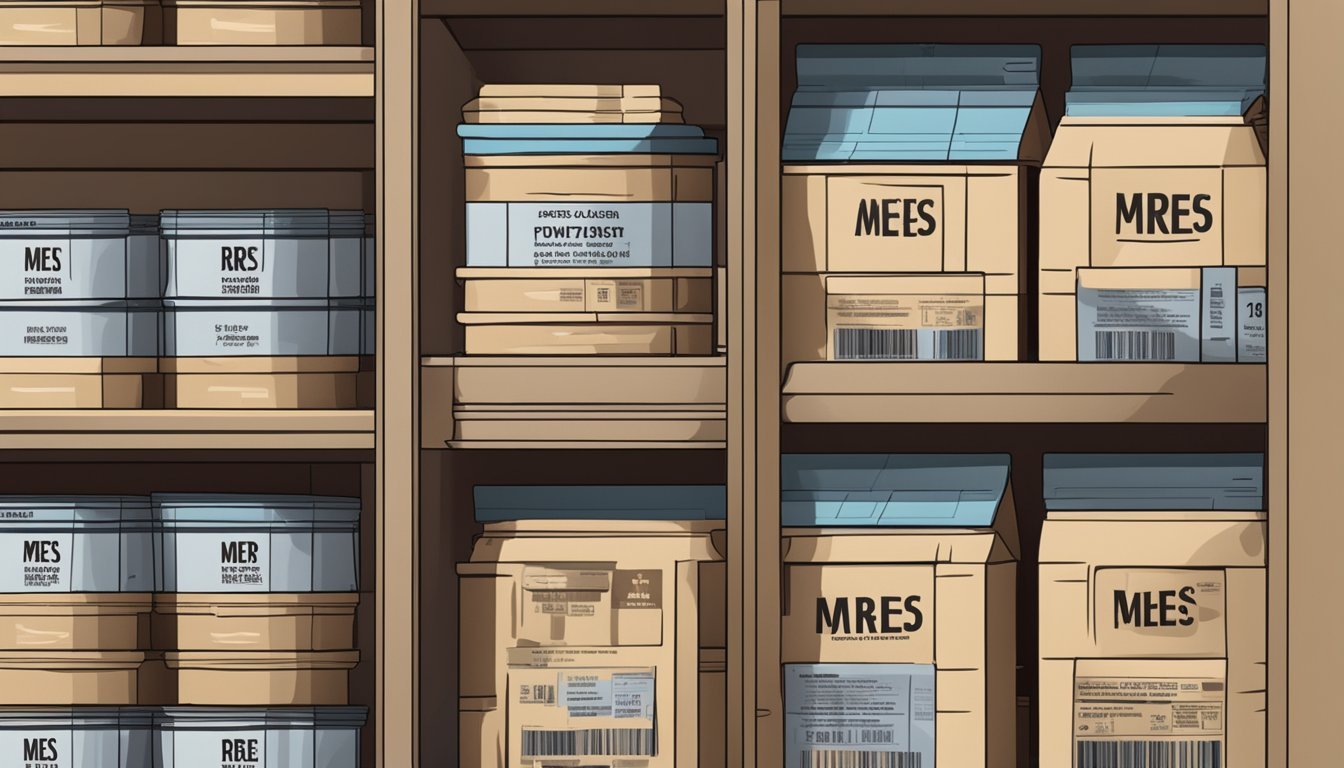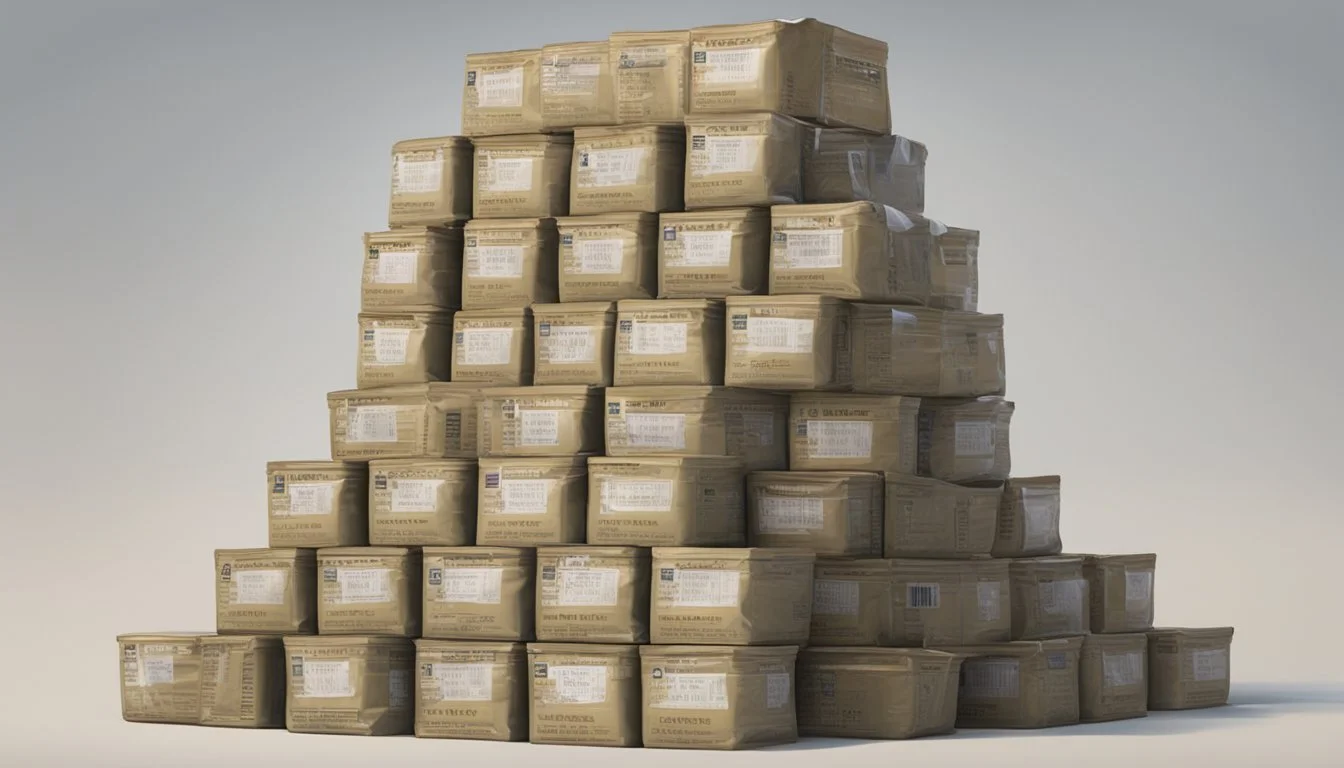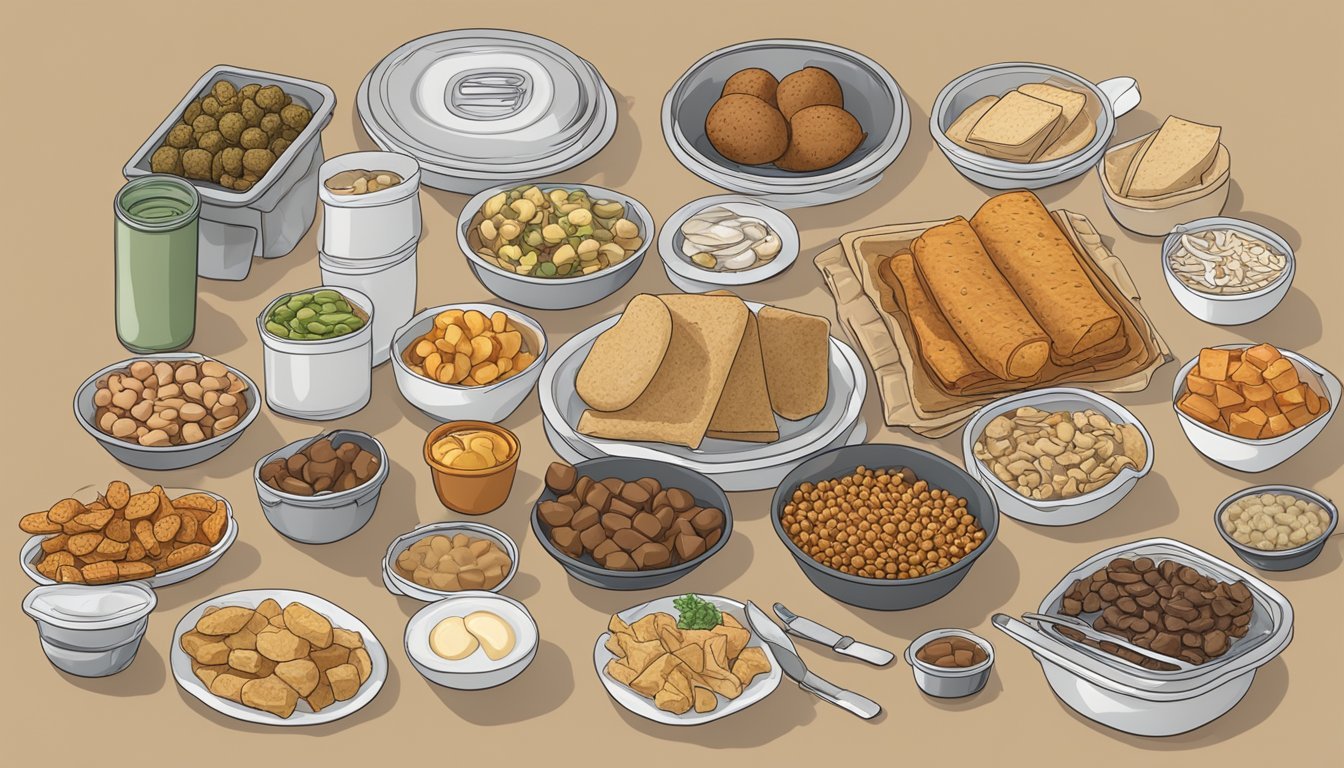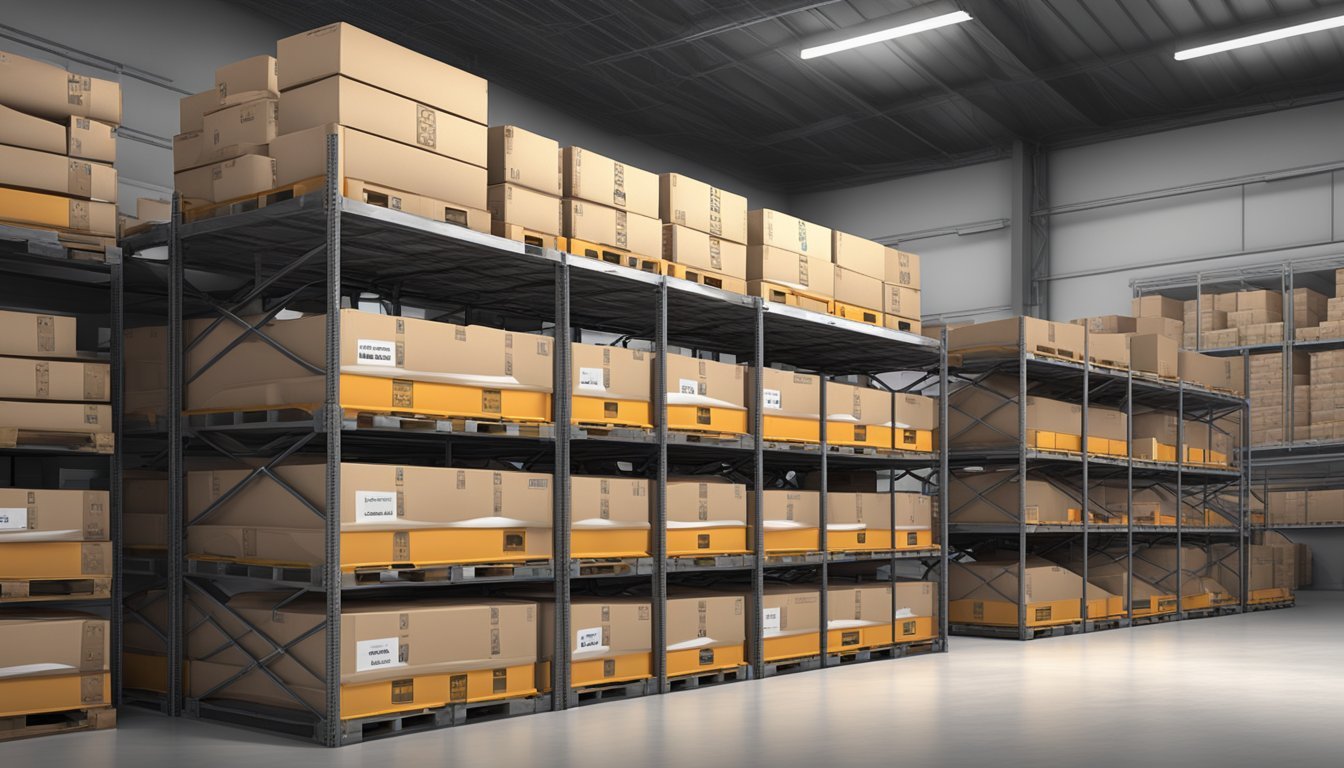How Long Does MREs Last
Shelf Life and Storage Insights
Meals Ready-to-Eat, commonly known as MREs, are self-contained, individual rations that are designed to provide a complete meal in situations where conventional food preparation is unavailable. Originally developed for the military, these portable packages have gained popularity among civilians, especially in the context of emergency preparedness and outdoor adventures. Their convenience and design to withstand harsh conditions make them an essential part of survival kits.
The shelf life of MREs is a topic of importance to both military personnel and the civilian population that might rely on them during emergencies. Shelf life varies depending on storage conditions, particularly temperature. When stored at a stable 60°F (15.6°C), MREs can remain viable for 5-7 years. An optimal storage climate is around 75°F, where the expected shelf life of an MRE is approximately five years. Higher storage temperatures reduce this time significantly, with a storage temperature of 120°F potentially limiting their shelf life to just one month.
While MREs do not have a set expiration date, it's crucial to understand that the longevity and safety of these meals are heavily dependent on storage conditions. MREs are designed to be shelf-stable and can withstand a range of environmental factors, making them reliable as emergency rations. However, the best practices for ensuring that MREs remain edible involve storing them at lower temperatures to maximize their shelf life.
Understanding MREs
MREs, or Meals Ready-to-Eat, are self-contained, individual field rations originally designed for the military to sustain soldiers when traditional food service facilities are unavailable. Each MRE provides a complete, nutritious meal that can be consumed without the need for refrigeration or cooking, tailor-made to maintain the energy and health of the consumer.
An MRE packet typically includes:
An entree — the main course, such as a meat or pasta dish
A side dish — rice, corn, fruit, or mashed potatoes
Bread or crackers
Spread — cheese, peanut butter, or jelly
A dessert
Candy — M&Ms, Skittles, or Tootsie Rolls
Beverage mix — coffee, tea, shake mixes, or electrolyte beverages
Condiments — salt, pepper, sugar, creamer, and sometimes hot sauce
Utensils — a spoon, and occasionally a fork
A napkin and sometimes moist towelettes for personal cleanliness
Moreover, MREs include a flameless ration heater (FRH), allowing the user to heat the meal without an external heat source. This feature greatly increases the convenience of MREs in the field, ensuring a hot meal can be enjoyed almost anywhere.
The packaging of MREs is designed to withstand harsh conditions and has a significant impact on the shelf life of the products. The variety of menu options helps to prevent palate fatigue and provides the necessary nutrients to support intense physical activity. They are not just confined to military use; MREs are also used in disaster relief operations and are popular among campers and survivalists.
Shelf Life Fundamentals
The longevity of Meals Ready-to-Eat (MREs) is closely tied to several critical factors, where storage conditions and packaging play pivotal roles. Understanding these can aid in maximizing the MRE shelf life.
Factors Affecting Shelf Life
The shelf life of MREs is predominantly influenced by the storage temperature. MREs can last substantially longer when stored at cooler temperatures, ideally around 60°F (15.6°C), which could extend their usability up to 5-7 years. Conversely, at higher temperatures such as 80°F (26.7°C), the duration for which MREs remain edible decreases significantly.
Low temperature (e.g., 50°F or 10°C): Up to 5 years
High temperature (e.g., 120°F or 49°C): At least 1 month
Additionally, other environmental conditions such as humidity and exposure to harsh conditions can also impact the shelf life.
Interpreting Date Codes
MREs come labeled with date codes that can be deciphered to determine their packing date. Instead of a typical expiration date, the time and temperature indicator (TTI) provides insights into how much shelf life the MRE may have left. This TTI is often calibrated to reflect the expected degradation of food quality over time under various temperature conditions.
Role of Packaging
The packaging of MREs is designed for optimal longevity, with sealed packets that prevent exposure to air and contaminants, which can otherwise hasten spoilage. The durable packaging is a critical factor in an MRE's extended shelf life, helping to ensure that the food remains safe and consumable even under challenging conditions. Properly maintained seals and the absence of package damage are key to the integrity of MRE shelf life.
Storage Guidelines
The shelf life of Meals Ready-to-Eat (MREs) is highly contingent on their storage conditions, with temperature being the single most critical factor determining their longevity. Understanding the temperature sensitivity and proper storage can greatly enhance the life expectancy of MREs.
Optimal Storage Conditions
MREs should be stored in conditions that are cool, dry, and away from direct sunlight. Ideally, a consistent temperature of around 60°F (15.6°C) to 70°F (21°C) ensures MREs remain edible for their maximum lifespan. Avoid fluctuating temperatures and moisture that could compromise the packaging and the food quality within.
Impact of Temperature
Temperature plays a pivotal role in the shelf life of MREs. The higher the storage temperature, the shorter the shelf life. For instance:
120°F (49°C): 1 month
75°F (24°C): 5 years
50°F (10°C): Up to 5 years (with potentially longer viability under optimal conditions)
When temperatures exceed 75°F, the rate of deterioration accelerates, thus it is advisable to consume or replace MREs more frequently.
Maximizing Freshness
To maximize the freshness of MREs, they should be stored in a consistent and cool environment. Refrigeration can extend their shelf life but is not necessary if temperatures around 50°F to 70°F can be maintained. A best practice includes regular inspection of the MREs for any signs of packaging damage or spoilage, coupled with tracking the storage duration even if an expiration date is not explicitly provided.
Recognizing Spoilage
When assessing Meals Ready-to-Eat (MREs) for spoilage, key indicators can safeguard one's health. These signs are unmistakable warnings that the food may no longer be safe to consume.
Common Signs of Deterioration
Color Changes: An MRE that exhibits a significant color shift from its original hue suggests potential spoilage.
Texture Alterations: The presence of sliminess or an unusual hardening of the food contents is cause for concern.
Health Risks and Prevention
Bacterial Growth: Spoiled MREs can harbor bacteria, increasing the risk of foodborne illness.
Botulism Risk: Improperly stored or damaged MRE packaging may lead to botulism, a severe and potentially fatal condition.
Handling MREs with attention to storage guidelines ensures freshness and minimizes the risk of spoilage.
Nutritional Aspects
MREs are designed to provide a complete nutritional package, maintaining a balance between caloric energy and essential nutrients while catering to various dietary requirements.
Caloric Content
MREs typically contain an average of 1,200 calories per meal. This caloric value is optimized to sustain active individuals in situations where regular food supply may not be available.
Protein, Fat, and Carbohydrate Breakdown
Each MRE provides a balanced mix of macronutrients necessary for energy and recovery:
Protein: Essential for muscle repair and growth, accounting for approximately 10-35% of total calories.
Fat: Supplies sustained energy, making up about 30-35% of the calorie content.
Carbohydrates: The primary source of quick energy, constituting around 30-60% of the caloric intake.
Vitamins and Minerals
MREs contain fortified levels of vitamins and minerals to meet daily nutritional requirements under strenuous conditions. They include, but are not limited to:
Vitamin A: Generally covering 50% of daily value.
Vitamin C: Often supplying 100% of daily requirements.
Calcium and Iron: Typically providing 20% and 30% of daily values, respectively.
Special Diet Considerations
Gluten-Free Options: Some MREs are tailored to exclude gluten, accommodating those with gluten intolerance or celiac disease.
Vegetarian Varieties: Available to meet the needs of individuals who do not consume meat.
MREs aim to cover a wide array of special diets, though exact availability may vary.
Popular MRE Components
Military Meals Ready-to-Eat, commonly known as MREs, contain an array of components intended to provide a nutritious and balanced meal for service members. Each MRE includes a main course, along with sides, snacks, and desserts to sustain energy levels during operations.
Main Courses and Entrees
Each MRE typically features a main course that provides the bulk of the meal's protein and carbohydrates. Beef stew and chicken with rice are traditional favorites, offering hearty and satisfying options. For those with dietary restrictions or preferences, vegetarian pasta entrees are also commonly included. The mains are designed to provide the necessary energy and are often paired with a carbohydrate-rich side like potatoes au gratin.
Sides and Spreads
In addition to the main course, MREs often contain side dishes that complement the entree. Side dishes like corn or bread provide additional sustenance and fiber. Sides often come with spreads such as cheese spread or peanut butter, which add a caloric boost and flavor to the otherwise plain sides. These not only enhance the taste but also contribute to the overall calorie count, important for high-energy field activities.
Snacks and Desserts
To round off a meal, MREs feature a variety of snacks and desserts. Sweet items like candy offer a quick source of energy, whereas applesauce or fruit provide a lighter, nutritious option. Various crackers accompany the meal, serving both as a snack and as an additional carbohydrate source. The inclusion of desserts not only boosts morale but also ensures a well-rounded intake of calories.
Preparation and Consumption
MREs, or Meals Ready-to-Eat, are uniquely packaged to provide convenience and practicality in various situations. They offer both heated and ready-to-eat options, with specific expectations for taste and flavor, complemented by a set of included accessories to facilitate consumption.
Heating and Ready-to-Eat Options
Most MREs include a flameless ration heater, allowing for a hot meal without the need for fire. To heat an MRE, a consumer adds water to the heater bag, places the food pouch inside, and allows chemical reactions to warm the food. Heated food pouches can significantly enhance the meal's palatability. However, should there be no time or conditions for heating, MREs are designed to be consumed cold, straight from the packet, serving as ready-to-eat meals.
Taste and Flavor Expectations
When it comes to taste, MREs are often the subject of a taste test to ensure they meet basic flavor standards. While MREs are not known for restaurant-level savoriness, modern iterations strive for a reasonable balance of flavors. The taste can vary widely, from hearty entrees to sweeter snack options. Flavor profiles are usually hearty and familiar, with added condiments like salt and hot sauce available to adjust the taste to personal preference.
Accompanying Accessories
Each MRE typically comes with an array of accessories to aid in meal preparation and consumption. This usually includes:
Utensils: Usually a spoon or a spork, which are durable enough for all types of MRE contents.
Napkin: For cleaning up after eating.
Condiments: Often salt, pepper, and sometimes hot sauce or other flavor enhancers.
It's important to note that the included accessories aim to offer a semblance of normal dining experience even in the most adverse conditions.
MRE Longevity
Meals Ready-to-Eat (MREs) have a variable shelf life influenced by storage temperatures and preservation methods. Properly managed, MREs can remain viable for several years.
Extending Shelf Life
To maximize the shelf life of MREs, they should be stored in cool temperatures. Keeping MREs at a consistent temperature of 75°F or below can significantly prolong their usability. Specifically:
60°F (15.6°C): Shelf life of up to 5-7 years.
75°F (23.9°C): Shelf life typically reaching 5 years.
Above 75°F: Shelf life decreases notably.
Freezing and Freeze-Dried Options
While traditional MRE components are not designed to be frozen, freeze-dried items within an MRE have a longer shelf life. Freeze-drying removes moisture, thus reducing the likelihood of microbial growth. Some MREs include freeze-dried components that effectively extend the overall shelf life of the meal. When using freeze-dried or dehydrated food components, one should be mindful that water is necessary to rehydrate these items before consumption.
Lifespan Under Various Conditions
The lifespan of MREs can be affected as follows by storage temperature:
Cooler than 75°F: Up to 10 years.
120°F (48.9°C): As little as 30 days.
Here's a brief overview of how temperature impacts MRE shelf life:
Storage Temperature Estimated Lifespan Below 60°F (15.6°C) 5-7 years 75°F (23.9°C) 5 years 120°F (48.9°C) 1 month
Note: While MREs can withstand varying conditions, extremely high temperatures can accelerate spoilage, and they are not recommended for long-term storage above 75°F.
Use in Emergency and Field Conditions
Meals Ready-to-Eat (MREs) serve as a critical resource for sustenance in various challenging environments, providing a complete meal with essential nutrients, designed to be convenient and durable for emergency scenarios and field operations.
Role in Disaster Preparedness
MREs are a staple in disaster preparedness due to their long shelf life and ease of distribution. They offer a pre-cooked meal that requires no further preparation, which is invaluable in times of disaster where cooking facilities may be unavailable. As self-contained rations, MREs encompass all the essential nutrients needed to sustain an individual, making them an integral component of emergency response strategies.
Accessibility for Preppers and Survivalists
For preppers and survivalists, MREs are a preferred emergency ration because of their accessibility and storage convenience. They are readily available for purchase by civilians and are designed to be compact, allowing for efficient storage in various conditions without the need for refrigeration. The self-contained nature of MREs also means that they can be easily transported, becoming an essential item in any emergency preparedness kit.
MREs vs. Other Field Rations
While there are different types of field rations available, MREs are distinguished by their ready-to-eat nature, packaging, and storage requirements:
Packaging: MREs come in durable, weather-resistant packaging suitable for rough field conditions.
Shelf Life: When stored properly, MREs’ shelf life can extend up to 10 years in cooler conditions, surpassing the longevity of some other rations.
Nutritional Content: Unlike some field rations that may require additions for complete nutrition, an MRE is a complete meal providing balanced nutrition in a single package.
By being designed for quick deployment and consumption, MREs are invaluable in providing necessary sustenance during critical moments in the field or in the wake of a disaster.
MREs Beyond the Military
While MREs were originally developed for the military to provide soldiers with nutritious and long-lasting meals in the field, they have found a wider application beyond just military rations.
Civilian Market Availability
Meals Ready-to-Eat (MREs) have transitioned from military exclusivity into the civilian market. Companies have repackaged MREs for civilian use, available for purchase on platforms such as Amazon and at outdoor retail stores. These civilian MREs mirror the robust attribute of the military versions, offering a substantial shelf life—often up to 25 years—and come with a variety of meal options.
Inclusion in Aid Programs
MREs are prominently utilized in humanitarian aid efforts due to their durability and ease of use. They are often included in emergency relief programs to provide sustenance in the aftermath of natural disasters. These ready-to-eat meals supply essential nutrition to affected populations, where cooking facilities might be unavailable or inoperative. Aid organizations stockpile MREs for quick deployment in crisis situations.
Novel Uses and Communities
MREs have interestingly garnered a following among niche communities. Survivalists and preppers value MREs for their longevity and convenience, incorporating them into their broader emergency planning. MREs are also popular among outdoor enthusiasts who require easy-to-carry, nutrient-dense, and no-prep food options. The versatility of MREs has promoted their use in off-grid living and by individuals seeking practical meal solutions for hectic lifestyles.








